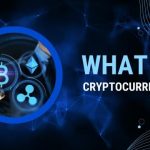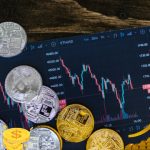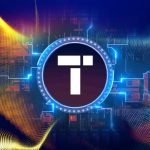Introduction:
In recent years, a revolutionary technology called Non-Fungible Tokens (NFTs) has gained immense popularity, transforming the way we perceive and exchange digital assets. NFTs have taken the world by storm, leaving an indelible mark on industries such as art, gaming, music, and collectibles.
This article aims to provide an in-depth exploration of NFTs, explaining their fundamental concept, diverse use cases, and profound impact on various creative sectors. We will also delve into notable NFT sales and contemplate the potential future of this burgeoning market.
Understanding NFTs:
Non-fungible tokens (NFTs) lie at the heart of the digital asset revolution, representing one-of-a-kind digital items that cannot be exchanged on a like-for-like basis. In contrast to cryptocurrencies like Bitcoin or Ethereum, which are interchangeable and have equal value, NFTs are indivisible entities with unique attributes that distinguish them from one another.
Powered by blockchain technology, NFTs provide a foundation of transparency, security, and unalterable ownership, revolutionizing the way we perceive and interact with digital assets.
Also Read: Apple Vision Pro: A Game-Changer for Metaverse and Blockchain
Use Cases of NFTs:
Art:
NFTs have truly transformed the art industry, empowering artists to tokenize their unique creations and connect directly with collectors. Through a decentralized marketplace, artists now have more autonomy over their work and are able to earn ongoing royalties for each subsequent sale.
This revolutionary technology has opened up boundless opportunities for artists to thrive financially while retaining ownership and control over their artistic endeavors. Notable examples include the digital artist Beeple, whose artwork “Everydays: The First 5000 Days” was sold for a staggering $69 million, putting NFTs in the global spotlight.
Gaming:
NFTs have brought about a paradigm shift in the gaming industry, introducing true ownership of in-game assets. Players can buy, sell, and trade unique virtual items, characters, or land, blurring the lines between virtual and physical ownership. Blockchain-based games like Axie Infinity have amassed a massive following, with players earning real income through NFTs.
Music:
NFTs offer musicians a new way to monetize their work and engage with their fanbase. Artists can release limited edition songs, albums, or concert tickets as NFTs, granting exclusive benefits to their supporters. Kings of Leon made history by being the first band to embrace the future of music distribution and release their album as an NFT.
This groundbreaking move sets a new standard for how music is shared and opens up exciting possibilities for artists and fans alike. By embracing this new era, Kings of Leon are leading the way in revolutionizing the music industry.
Collectibles:
NFTs have brought a fresh wave of excitement to the realm of collectibles. With their unique digital nature, they have revolutionized how we perceive and interact with valuable items. Digital trading cards, virtual collectible items, and even virtual real estate have become highly sought after. NBA Top Shot, a platform for buying and selling officially licensed NBA video highlights, has witnessed astonishing sales volumes and attracted millions of users.
Exploring The NFT in Metaverse:
The metaverse, a virtual reality realm where people can engage, build, and exchange, has gained significant momentum in parallel with the surge of NFTs. NFTs can play a pivotal role in the development of the metaverse, as they enable the creation and exchange of unique virtual assets within these immersive digital environments. As the metaverse evolves, NFTs may become the primary unit of value, allowing users to own and trade virtual land, buildings, avatars, and other digital assets.
The metaverse, with its immersive virtual reality experiences, has indeed captured the attention of many individuals. The rise of non-fungible tokens (NFTs) has further fueled the growth and potential of this digital realm. NFTs offer a unique opportunity for users to create and exchange exclusive virtual assets within the metaverse.
One of the key advantages that NFTs bring to the table is their ability to establish ownership and prove authenticity in a digital environment. This concept opens up endless possibilities for users to own and trade virtual assets such as land, buildings, avatars, artwork, collectibles, and more.
As the metaverse continues to evolve and expand, NFTs have the potential to become a fundamental unit of value within these immersive digital environments. Just like real-world assets hold value based on their uniqueness or scarcity, virtual assets represented by NFTs can possess intrinsic value as well.
The synergy between the metaverse and NFTs holds immense potential for creating vibrant digital economies where users have true ownership over their virtual possessions. As this technology progresses further into mainstream adoption, we may witness an entirely new paradigm where people are fully immersed in interconnected virtual worlds while engaging with unique digital assets represented by NFTs.
Also Read: Metaverse in Blockchain: Uncovering Business Opportunities
Notable NFT Sales:
The NFT market has witnessed some groundbreaking sales, propelling the concept into the mainstream. Here are a few notable examples:
-
Beeple’s “Everydays: The First 5000 Days” artwork sold for $69 million, making it one of the most expensive NFTs to date.
-
CryptoPunk #7804, one of the earliest and most iconic NFT collectibles, was sold for over $7.5 million.
-
Jack Dorsey, the CEO of Twitter, sold his first tweet as an NFT for $2.9 million.
The Future of NFTs:
The future of NFTs is incredibly bright, offering immense potential for growth and innovation. As the market continues to evolve, there are countless opportunities to explore and capitalize on this exciting technology. As the technology evolves, we can expect increased adoption in additional industries, such as real estate, education, and sports.
In today’s digital landscape, the interoperability of blockchain networks is rapidly becoming vital. This advancement will greatly simplify the transfer of assets, ensuring a seamless and efficient process. Furthermore, environmental concerns related to the energy consumption of certain blockchains may prompt the development of greener alternatives.
The Rise of NFT Marketplaces:
The surge in NFT popularity has given rise to numerous online marketplaces dedicated to buying, selling, and trading these unique digital assets. Platforms like OpenSea, Rarible, and SuperRare have emerged as leading players, providing creators and collectors with a space to interact and transact.
These marketplaces offer a wide range of NFT categories, allowing artists, gamers, musicians, and enthusiasts to explore and discover new opportunities within the NFT ecosystem.
Also Read: How to create an NFT on OpenSea
Challenges and Criticisms:
Despite the growing popularity and support for NFTs, it is important to acknowledge the challenges and criticisms they face. One key concern revolves around their environmental impact, particularly in relation to certain blockchain networks that rely on energy-intensive consensus mechanisms like proof-of-work.
It is crucial to address these concerns in order to ensure a more sustainable future for NFTs. Critics argue that the carbon footprint of certain NFT transactions contradicts the goal of sustainability and raises questions about the long-term viability of the technology.
Moreover, it is important to acknowledge that there have unfortunately been cases of plagiarism and violations of intellectual property rights within the NFT space. This highlights the need for proper attribution and respect for creators’ work in this emerging industry.
Some artists have reported unauthorized tokenization of their work, leading to debates over ownership and copyright protection. As the market matures, addressing these challenges will be crucial to ensure the credibility and integrity of the NFT ecosystem.
NFTs Beyond the Digital Realm:
While NFTs are predominantly associated with digital assets, there is potential for them to extend beyond the virtual world. Physical items can be paired with digital certificates of authenticity represented as NFTs, ensuring the uniqueness and provenance of real-world objects.
This opens up possibilities for tokenizing physical art pieces, luxury goods, and even real estate, enabling secure ownership verification and facilitating transparent transactions.
Also Read: VTunnel: Unlocking the Web’s Potential
Conclusion:
The emergence of Non-Fungible Tokens (NFTs) has revolutionized the concept of digital ownership and unlocked exciting possibilities for creativity. Now, individuals can truly claim exclusive ownership over unique digital assets, opening up new avenues for expression and innovation.
Their impact on various industries, including art, gaming, music, and collectibles, has been transformative, providing new avenues for creators to monetize their work and for collectors to engage with unique digital assets. While challenges and criticisms exist, the potential for NFTs to disrupt traditional systems of ownership and exchange remains undeniable.
With the ability to authenticate, tokenize, and monetize digital assets, NFTs have unlocked a digital renaissance, empowering creators and collectors worldwide. As the market continues to evolve, NFTs are poised to reshape how we perceive, value, and exchange all forms of digital content.
As the market continues to evolve, it will be fascinating to witness the future developments and innovations that emerge within the dynamic and ever-expanding world of NFTs.

We are a team of enthusiastic people who want to share our experience, knowledge and enterprise with the world. We love what we do and we hope you will too!. We pride ourselves on being the global leader in developing Techspurblog as a technology blog, which can create original content.






